 Weird Stuff
Weird Stuff  Weird Stuff
Weird Stuff  Our World
Our World 10 Ways Your Christmas Tree Is More Lit Than You Think
 Movies and TV
Movies and TV The 10 Coolest Stars to Set Sail on The Love Boat
 History
History 10 Things You Didn’t Know About the American National Anthem
 Technology
Technology Top 10 Everyday Tech Buzzwords That Hide a Darker Past
 Humans
Humans 10 Everyday Human Behaviors That Are Actually Survival Instincts
 Animals
Animals 10 Animals That Humiliated and Harmed Historical Leaders
 History
History 10 Most Influential Protests in Modern History
 Creepy
Creepy 10 More Representations of Death from Myth, Legend, and Folktale
 Technology
Technology 10 Scientific Breakthroughs of 2025 That’ll Change Everything
 Weird Stuff
Weird Stuff Ten Bizarre Facts About The Doge Meme
 Our World
Our World 10 Ways Your Christmas Tree Is More Lit Than You Think
 Movies and TV
Movies and TV The 10 Coolest Stars to Set Sail on The Love Boat
Who's Behind Listverse?

Jamie Frater
Head Editor
Jamie founded Listverse due to an insatiable desire to share fascinating, obscure, and bizarre facts. He has been a guest speaker on numerous national radio and television stations and is a five time published author.
More About Us History
History 10 Things You Didn’t Know About the American National Anthem
 Technology
Technology Top 10 Everyday Tech Buzzwords That Hide a Darker Past
 Humans
Humans 10 Everyday Human Behaviors That Are Actually Survival Instincts
 Animals
Animals 10 Animals That Humiliated and Harmed Historical Leaders
 History
History 10 Most Influential Protests in Modern History
 Creepy
Creepy 10 More Representations of Death from Myth, Legend, and Folktale
 Technology
Technology 10 Scientific Breakthroughs of 2025 That’ll Change Everything
10 Photojournalists Disciplined For Doctoring Pictures
Doctoring photographs is as old as photography. Although in portrait photography, such alterations aren’t typically regarded as deceitful, changes to photographs taken for news articles are considered dishonest. For editors of reputable newspapers or owners of news services, doctoring a photograph is a fireable offense. It also brings censure upon those who perform it and damages their reputations, if not their careers.
Despite such consequences, some photojournalists have doctored photographs of historical, current, or otherwise significant events, adding or deleting elements, staging photographs, making composites of separate photographs, altering colors or backgrounds, or incorporating images from others’ work into their own without permission or acknowledgment. Some of these photographers have worked for prestigious national newspapers or international wire services. Others have been employed by smaller but well-known and reputable news publications. A few have even been Pulitzer Prize–winning photographers.
It’s hard to believe professionals would endanger their reputations and careers by altering the pictures on which their professional lives and work depend, but these ten photojournalists were disciplined for faking pictures, and most were fired.
10 Mike Meadows
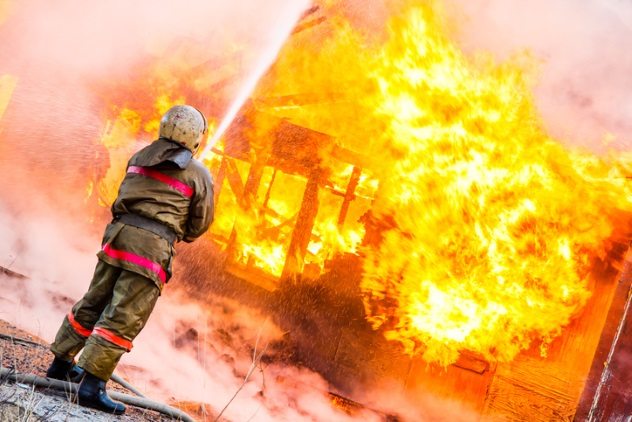
As a luxurious home blazed behind him, Los Angeles County firefighter Mike Alves splashed water from the property’s swimming pool over his head. Mike Meadows’s October 27, 1993, photograph of Alves captured such a remarkable image of the towering inferno and its toll on the valiant firefighter who’d fought to save the home that the Los Angeles Times planned to enter it for a shot at the Pulitzer Prize. Instead, the newspaper suspended Meadows for a week without pay before reassigning him to “a non-editorial job.”[1] Meadows’s dramatic photograph wouldn’t be entered for consideration for the Pulitzer.
After investigating rumors that Meadows’s photograph had been staged, the newspaper’s director of photography, Larry Armstrong, determined Meadows had fabricated the picture. Alves told Fred Sweet, Armstrong’s assignment editor, that Meadows had suggested Alves enter the pool and douse his head. In doing so, Armstrong said, Meadows committed an “extremely serious” act, one which could have cost the photographer his job. “This is a firing offense,” Armstrong said. “When you manipulate the situation, you manipulate the news.” The Times asked the Associated Press (AP) to pass the word to its clients not to publish the discredited photograph again.
9 Edward Keating
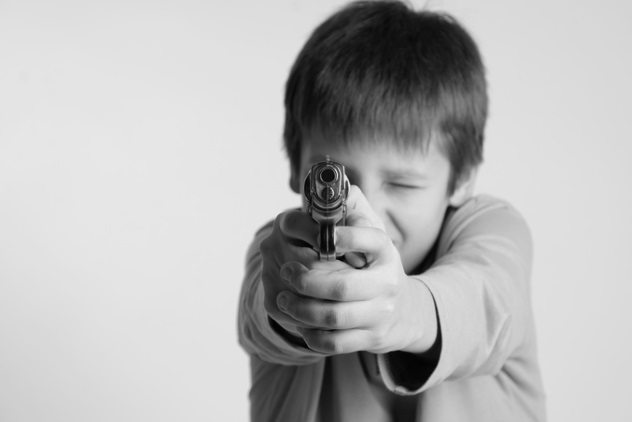
In 2002, the prestigious Columbia Journalism Review charged The New York Times ‘s Pulitzer Prize–winning photographer Edward Keating with staging a photograph of Brandon Benzo, a six-year-old boy captured on film “pointing a toy gun outside a store in Lackawanna, New York, where the FBI had arrested six alleged Al-Qaeda operatives.” According to three photographers on the scene, Keating posed the boy, and one of them took the picture of him. Some contend the photograph depicted “anti-Muslim bias.” In late editions of the newspaper, the photograph was not used because it was deemed “irrelevant.”[2]
Ultimately, the newspaper forced Keating to resign for staging the photograph. The picture appeared in The New York Times itself and in several of the newspapers in its wire service. Keating’s colleagues had protested his staging of the photograph, and Arab-American readers said the picture “reinforced the stereotype that Arabs teach violence to their children.”
8 Narcisco Contreras
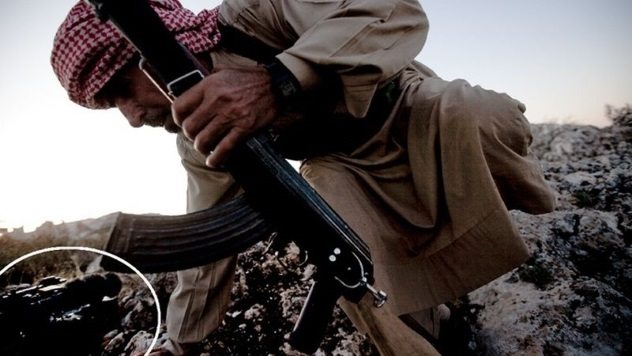
Pulitzer Prize–winning photographer Narcisco Contreras wasn’t happy with a photograph he took showing an armed Syrian opposition fighter taking cover during a firefight with government troops in Telata village. The September 29, 2013, photograph’s caption identified the village as a “frontline location at the top of a mountain in the Idlib province countryside of Syria.” In the bottom-left corner of Contreras’s photograph, a colleague’s camera was shown lying on the ground, near the Syrian fighter.
Contreras used Photoshop to cover the camera with duplicated bits of the background. The AP’s vice president and Director of Photography, Santiago Lyon, said, “Deliberately removing elements from our photographs is completely unacceptable and we have severed all relations with the freelance photographer in question. He will not work for the AP again in any capacity.”[3]
The AP also purged Contreras’s photographs from its database, including those for which he’d won the Pulitzer Prize.
7 Adnan Hajj
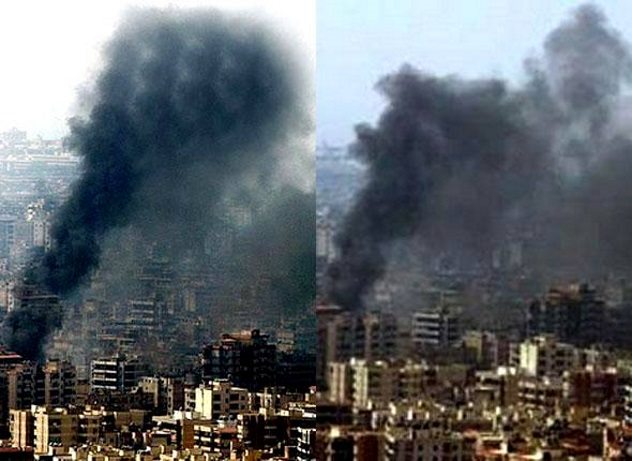
Reuters, the well-known news agency, severed its association with freelance photographer Adnan Hajj after he was caught manipulating two photographs of 2006 fighting in Lebanon. The 920 photographs Hajj had contributed to Reuters’s database while working for the agency from 1993 to 2003 and from 2005 to 2006 were also removed.
One picture showed buildings targeted in an Israeli air strike near Beirut. Although the original photograph showed an abundance of dark smoke rising from the buildings, Hajj used Photoshop to increase and darken the smoke. He manipulated the second picture, shot on August 2, to show three flares, instead of one, being dropped from an Israeli fighter jet over Southern Lebanon.
Although Hajj argued he hadn’t deliberately manipulated the photographs but had merely made mistakes while trying to “remove dust marks,” Reuters’s global photo editor, Tom Szlukovenyi, maintained, “There is no graver breach of Reuters [sic] standards for our photographers than the deliberate manipulation of an image.” He added, “Reuters has zero tolerance for any doctoring of pictures and constantly reminds its photographers, both staff and freelance, of this strict and unalterable policy.”
From 2003 to 2005, Hajj also did freelance work for the AP. His 193 archived photographs were reviewed to check their authenticity.[4]
It’s not easy to detect well-done manipulations, but Hajj’s “careless digital alterations” were fairly easy to spot. Using a computer program, he’d darkened and duplicated the smoke in the Beirut photograph and added extra flares to the picture of the fighter. Charles Johnson, who’d brought the story of Hajj’s duplicity to light for his blog’s readers, said, “Regular smoke just isn’t going to have a pattern like that.” Such patterns typically result from the use of Photoshop’s cloning tool. Other clues to photograph manipulation include color variations, repeated shadows, and blurry or especially sharp borders around people or objects that have been inserted into images.
6 Bryan Patrick

In February 2012, The Sacramento Bee suspended Bryan Patrick. Then, the newspaper fired him. After a reader had questioned the authenticity of a photograph showing an egret devouring a frog, the newspaper’s investigation discovered Patrick’s picture was a composite. Apparently, the composite photograph’s inclusion of cloned plants had tipped off the observant reader that something about the picture was amiss.
Patrick, who’d manipulated additional photographs, was fired “for violating the paper’s ethics policy forbidding manipulation of documentary photographs.”[5]
5 Miguel Tovar
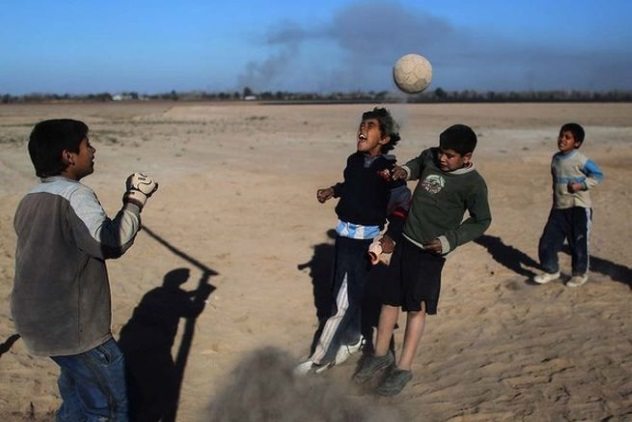
Miguel Tovar, a freelance photographer for the AP who was taking pictures of the 2011 Copa America soccer tournament in Argentina, shot pictures of children playing the sport in a dusty field. In the process, he captured an image of his own shadow. He then used Photoshop to clone the dust and paste it over his shadow. As a result, the AP fired Tovar and removed all his work from their database and from a website dedicated to its commercial photo licensing division.
According to AP guidelines, “Minor adjustments in Photoshop are acceptable. These include cropping, dodging and burning, conversion into grayscale, and normal toning and color adjustments that should be limited to those minimally necessary for clear and accurate reproduction [ . . . ] and that restore the authentic nature of the photograph.” Tovar’s modification of his original photograph was found to violate AP’s standards, which are necessary, many professional photographers agree, to protect the organization’s reputation for presenting an unbiased view of events.[6]
4 Patrick Schneider
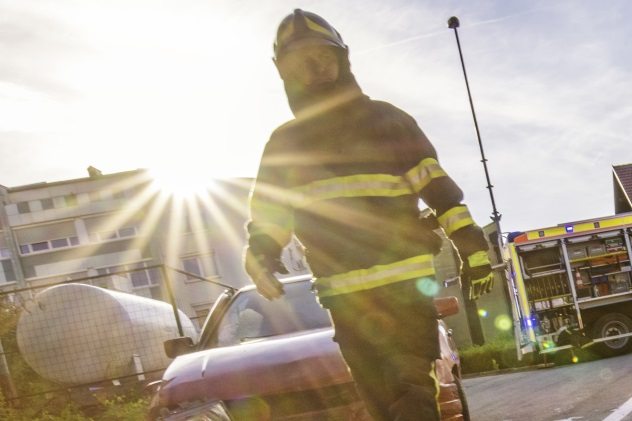
Rick Thames, editor of The Charlotte Observer, delivered an apology to his newspaper’s readers. Patrick Schneider, one of the Observer ‘s photographers, had failed to live up to the publication’s standards of accuracy. In his July 2006 photograph of a firefighter working with the morning Sun in the background, the sky looked much different than the actual “brownish-gray sky” had appeared when he’d taken the picture. Schneider’s edited photo depicted a “deep red sky” in which the Sun was surrounded by a halo.
Schneider said he’d never intended to fool anyone. He’d intended only to compensate for the picture’s underexposure. His alteration of the photograph violated the newspaper’s policy, which stipulates that “no colors will be altered from the original scene photographed.”
On a previous occasion in 2003, Schneider had been reprimanded and suspended without pay for three days after changing the color intensity and contrast in several pictures. This time, his manipulation of his work cost him his job.[7]
3 Allan Detrich
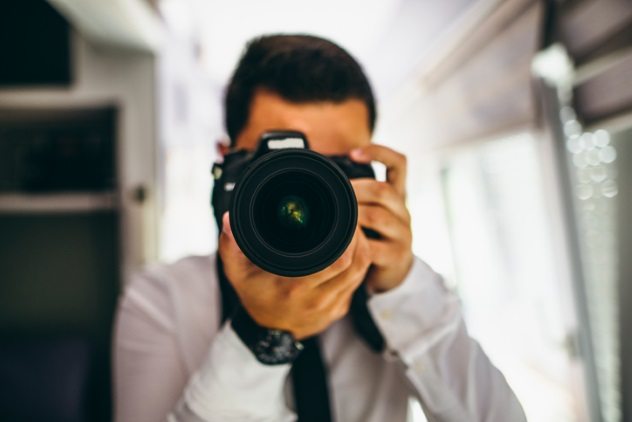
The manipulation of photographs has become widespread enough in the news business that “the public is losing faith in us,” said John Long, chairman of the ethics and standards committee of the National Press Photographers Association. Without the public’s trust in the integrity of photographers’ work, “we have nothing; we cannot survive,” he added.
His comments highlight the problem of some news photographers’ use of computer programs to manipulate photographs. One such photographer, Allan Detrich, who was fired from the staff of the Toledo Blade for altering photographs, said, “I screwed up. I got caught.”
On April 4, 2007, Donald R. Winslow, editor of News Photographer magazine, called the newspaper’s executive editor, Ron Royhab, to alert him to the possibility that the Toledo Blade ‘s front-page photograph had been doctored. During an inquiry the next day, the 44-year-old, award-winning Detrich, who’d been employed by the newspaper since 1989, admitted he’d altered the photograph. However, he’d planned to keep the modified version for himself and hadn’t meant to transmit it to the Blade. “That’s not something I would do,” he said. When the newspaper conducted an investigation, reviewing all of Detrich’s photographs, the photographer resigned. If he had stayed on, he would have been terminated, Royhab said.
In his doctored photograph of Bluffton University’s baseball team, Detrich had removed a pair of legs that showed beneath a banner hung on a fence. The review of his other work showed numerous other discrepancies: “He had habitually erased unwanted elements in photos, including people, tree limbs, utility poles, electrical wires, light switches and cabinet knobs. In some instances, he added tree branches or shrubbery. In one sports shot he added a hockey puck; in another he inserted a basketball.” All told, he’d unmistakably altered 79 of the 947 photographs he’d submitted to the newspaper between January and March 2007.[8]
2 Brian Walski
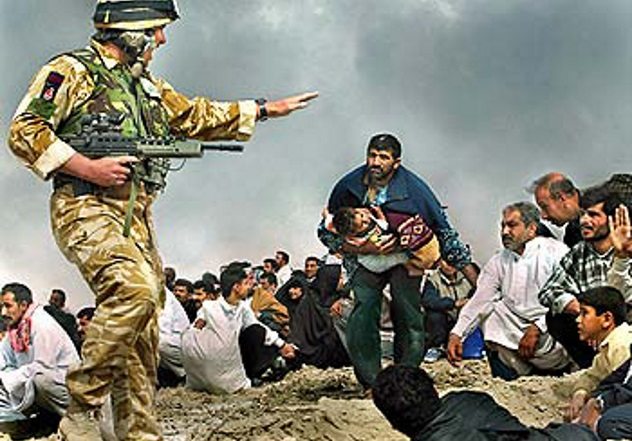
In April 2003, a photograph was published across the front page of the Hartford Courant. The picture was also “prominently” displayed in the Chicago Tribune. Brian Walski, the Los Angeles Times staff photographer who took it while covering the war in Iraq, was fired after admitting he’d manipulated the picture. The photograph was a composite of two pictures “taken moments apart.” He hadn’t intended to transmit the altered photograph, he said.
A Courant employee spotted an apparent duplication in Walski’s picture. Asked about it, Walski admitted he’d combined the photographs. After being fired, Walski said, “Now no one will touch me. I went from the front line for the greatest newspaper in the world, and now I have nothing. No cameras, no car, nothing.”[9]
1 Souvid Datta

Photographer Souvid Datta was an award-winning recipient of grants from Photo District News, the Pulitzer Center, Getty, and Magnum before he admitted to “appropriating” other photographers’ work and passing it off as his own and to doctoring images.
A picture he took in 2014 shows three women. Datta copied and pasted one of the women from a 1978 image by the celebrated photographer Mary Ellen Mark. Originally, he said he’d added Mark’s image to his own photograph simply to see what Asuma, a woman who’d refused to be photographed with sex workers in Kolkata, India, would look like, had she consented to be in his picture. Then, by mistake, he’d uploaded the photograph onto his blog, accompanied by a misleading caption suggesting the image of the woman he’d copied and pasted from Mark’s photograph was Asuma. Later, seeking “validation and exposure,” he published the doctored photograph in “an essay with an untruthful caption.”
During this “dishonest phase,” he said he also cloned and combined other pictures and misrepresented other photographers’ work as his own, including two photographs by Daniele Volpe, which appeared on his Facebook page in 2015.[10]
Gary Pullman, an instructor at the University of Nevada, Las Vegas, lives south of Area 51, which, according to his family and friends, explains “a lot.” His 2016 urban fantasy novel, A Whole World Full of Hurt, available on Amazon.com, was published by The Wild Rose Press.
Read more accounts of journalistic dishonesty on 10 Fake Stories The World Fell For In 2015 and 10 Fake Viral News Stories From The Early 20th Century.

